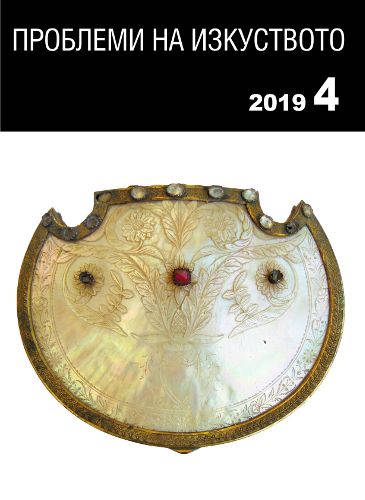Украсата на металните предмети с църковно предназначение и османската естетика
Decorative metalwork on church objects and the Ottoman aesthetic
Author(s): Liliana StankovaSubject(s): History, Fine Arts / Performing Arts, Visual Arts, 15th Century, 16th Century, 17th Century, History of Art
Published by: Институт за изследване на изкуствата, Българска академия на науките
Summary/Abstract: The article seeks, first and foremost, to identify and present the motifs coming mainly from the Islamic art developed within the Ottoman Empire, which occur in the decorative metalwork of church objects such as the metal overlay of communion-table gospels and crosses, ciboria, communion cups and censers, made in cultural hubs within what is now Bulgaria. The reason is in that there is a lack of clarity as to the definitions and provenance of these motifs in Bulgarian scholarly literature. The first part of the paper deals with the characteristics of two groups of silver church plate: hemispherical chalices and cruets decorated with a combination of Christological iconographic elements and motifs of the earliest stylistic royal trend of the Ottoman decorative style. Used in a Christian and a Islamic contexts, these testify to the mutual exchange of goldsmith practices in the Balkans and have probably brought about the spread of Ottoman motifs in the decoration of church objects. A centre of the manufacture of hemispherical chalices was Chiprovtsi. The second part of the text describes the characteristics of the three main groups of motifs (Rumi-Khatai patterns, palmettes and saz leaves, floral patterns), illustrating by examples of their occurrence on Bulgarian monuments. Using a comparative analysis, an attempt is made to compare this phenomenon with the production of other Orthodox ethnic communities, mostly Serbs and Greeks. At the end, attention is drawn to cloisonné enamelwork technique, a singularity of a group of monuments associated with a workshop in the region of Plovdiv and the Monastery of Bachkovo. In conclusion, Ottoman motifs are found in the ornamental repertoire of the metal church objects of the seventeenth through the mid-eighteenth centuries, reflecting a trend typical of all forms of Christian art of the age.
Journal: Проблеми на изкуството
- Issue Year: 2019
- Issue No: 4
- Page Range: 21-31
- Page Count: 11
- Language: English, Bulgarian
- Content File-PDF

